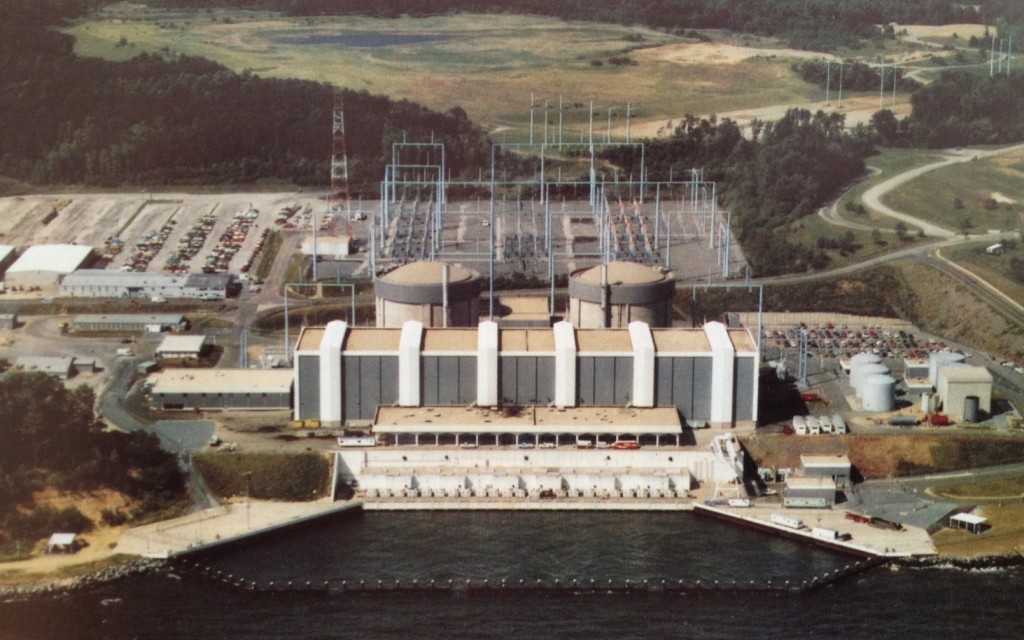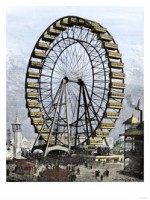Nuclear Energy Blog Carnival 218
 The 218th Nuclear Energy Blog Carnival has been posted at Yes Vermont Yankee. You can click here to access this latest installment in a long running tradition among pro-nuclear authors and bloggers.
The 218th Nuclear Energy Blog Carnival has been posted at Yes Vermont Yankee. You can click here to access this latest installment in a long running tradition among pro-nuclear authors and bloggers.

A message from Goodway Technologies Corporation
Delivering Massive Efficiency (and Bottom-Line) Gains Through Chemical Descaling
 The 218th Nuclear Energy Blog Carnival has been posted at Yes Vermont Yankee. You can click here to access this latest installment in a long running tradition among pro-nuclear authors and bloggers.
The 218th Nuclear Energy Blog Carnival has been posted at Yes Vermont Yankee. You can click here to access this latest installment in a long running tradition among pro-nuclear authors and bloggers.
 With cap-and-trade and carbon tax proposals going nowhere in congress, the Obama administration is tackling the global warming issue through the administrative branch, using U.S. Environmental Protection Agency regulations. In the transport sector, the administration promulgated vehicle fuel efficiency (mileage) standards. In the power sector, the EPA has proposed regulations requiring that all new power plants emit no more CO2 than a typical natural gas plant-thus, any new coal plants would have to employ CO2 sequestration. And now, the EPA is proposing to address CO2 emissions from existing power plants by establishing CO2 emissions reduction requirements for the power sector.
With cap-and-trade and carbon tax proposals going nowhere in congress, the Obama administration is tackling the global warming issue through the administrative branch, using U.S. Environmental Protection Agency regulations. In the transport sector, the administration promulgated vehicle fuel efficiency (mileage) standards. In the power sector, the EPA has proposed regulations requiring that all new power plants emit no more CO2 than a typical natural gas plant-thus, any new coal plants would have to employ CO2 sequestration. And now, the EPA is proposing to address CO2 emissions from existing power plants by establishing CO2 emissions reduction requirements for the power sector.
Ratepayers in the Pacific Northwest have reason to celebrate the dedicated employees of Energy Northwest's 1170-megawatt Columbia Generating Station: The Northwest's sole nuclear energy facility generated a record 9.7 million megawatt hours of electricity during the fiscal year that ended Monday, June 30-eclipsing a previous record of 9.5 million megawatt hours in fiscal year 2006.
On August 3, 2014, the window will close on a rare opportunity to use the political process to strongly support the use of science to establish radiation protection regulations. Though it is not terribly difficult for existing light water reactors and fuel cycle facilities to meet the existing limits from 40 CFR 190 regarding doses to the general public and annual release rate limits for specific isotopes, there is no scientific basis for the current limits. If they are maintained, it would hinder the deployment of many potentially valuable technologies that could help humanity achieve a growing level of prosperity while achieving substantial reductions in air pollution and persistent greenhouse gases like CO2.
 The 217th edition of the Nuclear Blog and Author Carnival has been posted at Next Big Future. You can click here to access this latest installment in a long running tradition among the world's top pro-nuclear authors and bloggers.
The 217th edition of the Nuclear Blog and Author Carnival has been posted at Next Big Future. You can click here to access this latest installment in a long running tradition among the world's top pro-nuclear authors and bloggers.
Near Augusta, Georgia, the first new commercial nuclear power reactors under construction in the United States in 30 years continue to "go vertical." Take an inside look at the latest from the Vogtle-3 and -4 construction site, including placement of the 1.8 million pound containment vessel bottom head for Unit 4, the cooling tower for Unit 3 surpassing 300 feet, and a very interesting visit to the Port of Savannah where many of the most massive Vogtle components arrive via ship.
Recent developments in Japan concerning the Fukushima Daiichi plant recovery specifically, and nuclear energy generally, have not been exceedingly positive. The difficult recovery efforts at the crippled nuclear plant are not all proceeding smoothly; delays and technical problems continue to abound and confound. Meanwhile, on a broader scale, the national pullback from nuclear may be even more serious and have longer term effects than anyone realizes.
A quick note about an interesting contest going on at the National Museum of Nuclear Science & History in Albuquerque, New Mexico.
 The 216th edition of the Carnival of Nuclear Bloggers and Authors is posted at Next Big Future. You can click here to view this latest installment of a long running tradition among pro-nuclear authors and bloggers.
The 216th edition of the Carnival of Nuclear Bloggers and Authors is posted at Next Big Future. You can click here to view this latest installment of a long running tradition among pro-nuclear authors and bloggers.
Recent scandals at the U.S. Department of Veterans Affairs (VA) and General Motors (GM) have struck a chord with the media and the American people because they represent the worst in bureaucracies-where the lives of individuals seem to get lost in the bureaucratic woods. In the case of the VA, lying about wait times blocked pathways for care and potentially resulted in the early deaths of some veterans. In the case of GM, the bureaucracy put horse blinders on its employees so that they couldn't recognize the safety significance of ignition switch problems linked to at least 13 deaths.
The Focus on Communications Workshop held on June 19 at the 2014 American Nuclear Society Annual Meeting posed the question: "What will it take to move nuclear energy forward?" Mimi Limbach of the Potomac Communications Group covered some very interesting poll data and facilitated a conversation on how to move nuclear energy forward through effective communication.
 The 215th edition of the Carnival of Nuclear Bloggers and Authors has been posted at The Hiroshima Syndrome. You can click here to access this latest installment of a long running tradition among pro-nuclear authors and bloggers.
The 215th edition of the Carnival of Nuclear Bloggers and Authors has been posted at The Hiroshima Syndrome. You can click here to access this latest installment of a long running tradition among pro-nuclear authors and bloggers.

Calvert Cliffs Plant; two unit nuclear generating station. Baltimore Gas and Electric Company brochure, October 1980.
I received an email this morning (in the midst of my daily avalanche of promotional emails) with a link to a brief story about uprating of nuclear plants worldwide (in other words, increasing the power output of an already-built plant)-what had been done, how many were planned, and so forth. I wondered to myself just how many nuclear plants in the United States had been uprated, and when they started-and given the recent hullabaloo over the recent U.S. Environmental Protection Agency CO2 emission policy, it seems like (in addition to discussing small modular reactors) we might also want to toss the uprate card back on the table. Instead of flat or only slightly rising demand for electricity, we may face a steady lowering of generating capacity as plants that are high CO2 emitters (and thus violators) get shut down. Sure, renewables will play a part, and so will increased efficiency, but having more power is better than having less, or too little. I found no quick and easy reference for the kind of analysis I wanted, so I took a little time and did it myself.
 In February, the U.S. Department of Energy finally announced the approval of a federal loan guarantee for the Vogtle-3 and -4 reactor project under construction near Waynesboro, Ga. The approval came after four years of negotiations between the government and the utilities involved in the Vogtle project.
In February, the U.S. Department of Energy finally announced the approval of a federal loan guarantee for the Vogtle-3 and -4 reactor project under construction near Waynesboro, Ga. The approval came after four years of negotiations between the government and the utilities involved in the Vogtle project.
A group of past presidents and fellows of the American Nuclear Society has composed an important open letter to ANS on a topic that has been the subject of controversy since before I first joined the society in 1994. The subject line of that letter is "Resolving the issue of the science of biological effects of low level radiation." The letter is currently the only item on a new web site that has been created in memory of Ted Rockwell, one of the pioneers of ANS and the namesake of its award for lifetime achievement.
 The 214th Carnival of Nuclear Energy Bloggers has been posted at Atomic Power Review. You can click here to access this latest edition of a long-standing tradition.
The 214th Carnival of Nuclear Energy Bloggers has been posted at Atomic Power Review. You can click here to access this latest edition of a long-standing tradition.
Such was the provocative title of the Focus on Communications Workshop held at the 2014 American Nuclear Society Annual Meeting on the afternoon of Wednesday, June 19.
Thank you for your remarkable contributions to continuing progress and advancement in nuclear sciences and technologies-and congratulations to American Nuclear Society honors and awards recipients at the 2014 ANS Annual Meeting.
 It's time for the 213th Carnival of Nuclear Energy Bloggers and Authors, hosted this week right here at the ANS Nuclear Cafe. It's a big week for ANS, with the Annual Meeting going on in Reno... so without any further remarks we'll dive right in!
It's time for the 213th Carnival of Nuclear Energy Bloggers and Authors, hosted this week right here at the ANS Nuclear Cafe. It's a big week for ANS, with the Annual Meeting going on in Reno... so without any further remarks we'll dive right in!
One of the many highlights at American Nuclear Society national meetings is the opportunity to hear terrific communicators sharing their insights and best practices, along with lively and informative panel discussions that follow. The June 2014 ANS Annual Meeting offers three of these popular sessions-if you will be in Reno, Nev., be sure to schedule them on your meeting calendar.